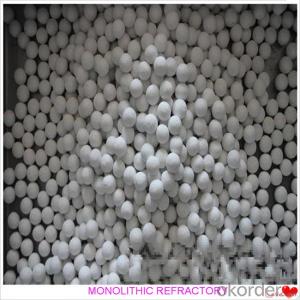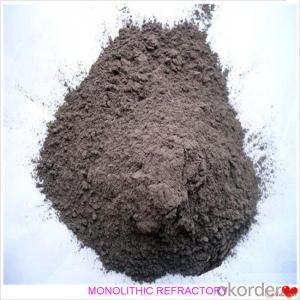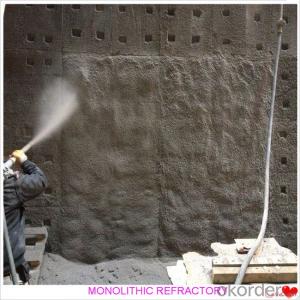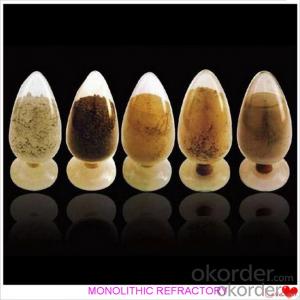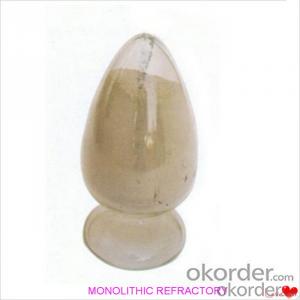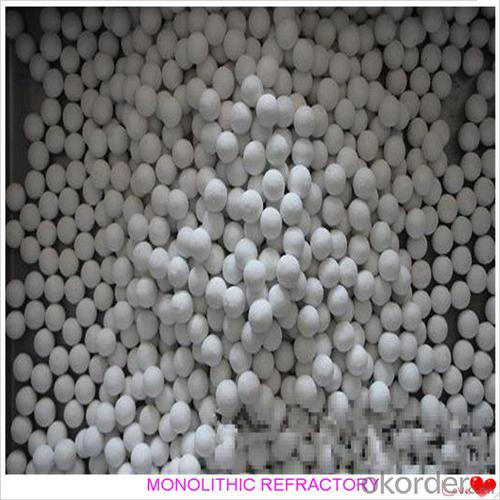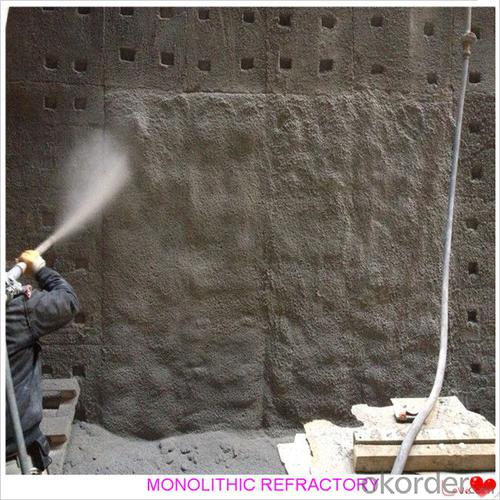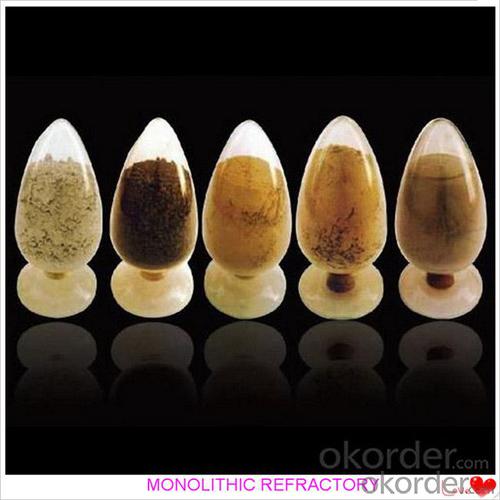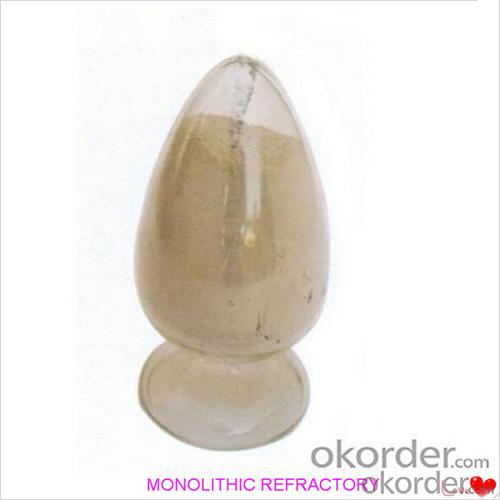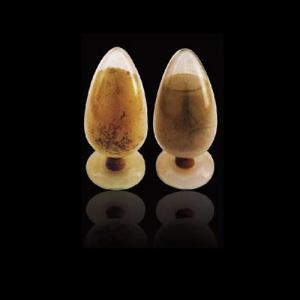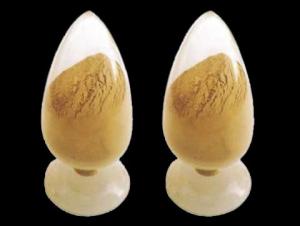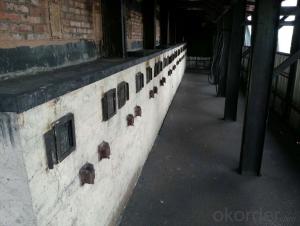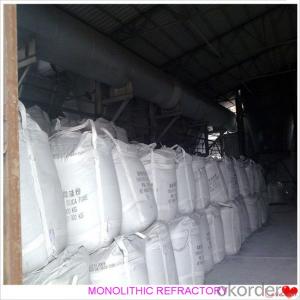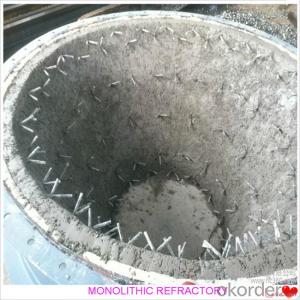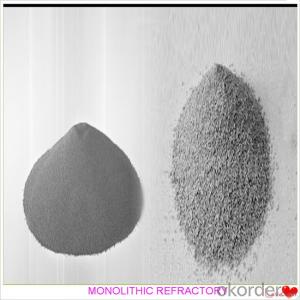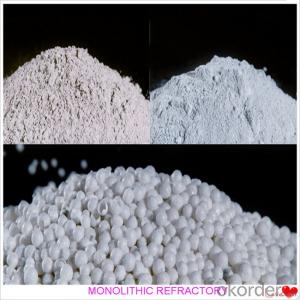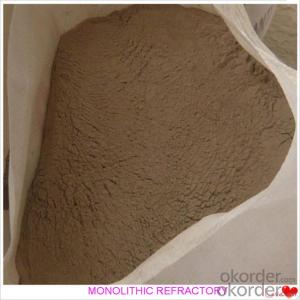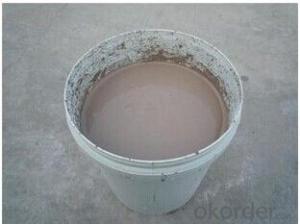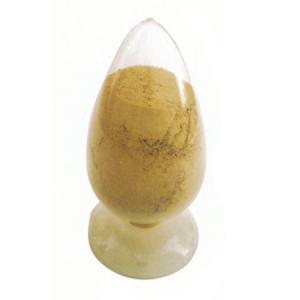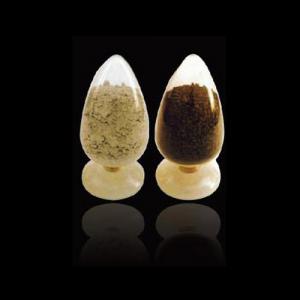Monolithic Refractories for Iron and Steel Industry:Cheap Castable Solutions for Fireplace and Industrial Furnace
- Loading Port:
- China main port
- Payment Terms:
- TT OR LC
- Min Order Qty:
- 1000 kg
- Supply Capability:
- 3000000 kg/month
OKorder Service Pledge
OKorder Financial Service
You Might Also Like
Cheap Castable For Fireplace and Industrial Furnace in Iron and Steel
Product Description:
Cheap castable is manufactured according to international standards. The product is famous for its excellent abrasion resistance and low thermal conductivity. Further, these can be provided in different specifications as required by the clients. The Cheap castables are used high purity raw materials and additives as the main material, and made of under superfine powder adding technology.
Product Advantages:
The material has excellent structural stability and air tightness, and has high physical and chemical properties, also has a fine working ability.They should be used with the same material products.
Product Applications:
For feature of Cheap castable, they have excellent abrasion resistance, thermal shock resistance, high-temperature resistance, anti-corrode and have high intensity.
Designed for refractory lining of blast furnace iron and slag runners, skimmers and soon
They can be used in troughs of small and mid size BFs and in all positions of the troughs where fast tapping is required.
Product Specifications:
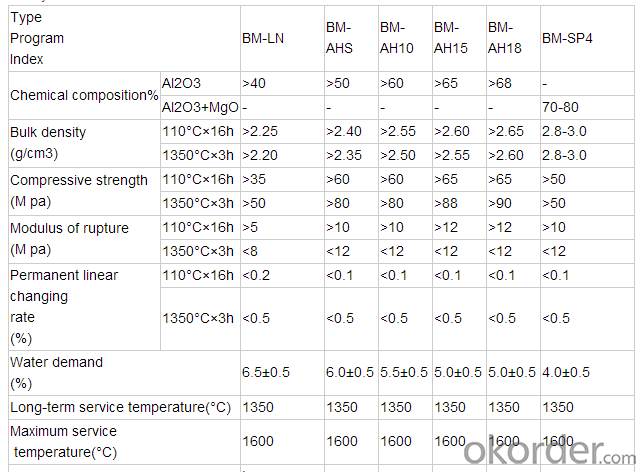
FAQ:
1. How you can control your quality?
For each production processing, we have complete QC system for the chemical composition
and Physical properties. After production, all the goods will be tested, and the quality certificate
will be shipped along with goods.
2. What's your delivery time?
It usually needs about 20days- 45 days after receiving the deposit.
3. Do you provide free samples?
Yes, we can provide a free sample for testing, If we have sample in stock,
The quantity based on the material type, The buyer should bear all the shipping costs.
4. What's your payment terms?
We can accept 30% deposit, 70% balance before shipment for ordrs over $ 2000.
5. Can we visit your Company?
Yes, certainly. You are very welcome to China and we will be honored to have a customer and friend.
Product Picture:
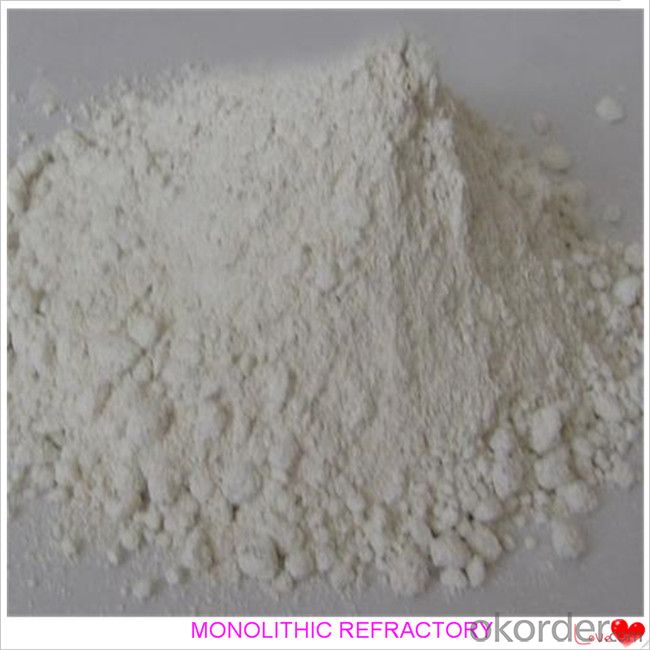
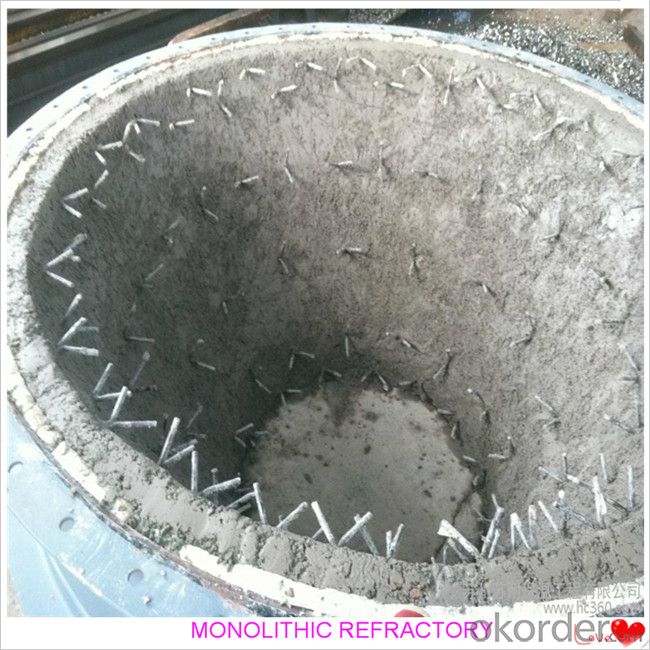
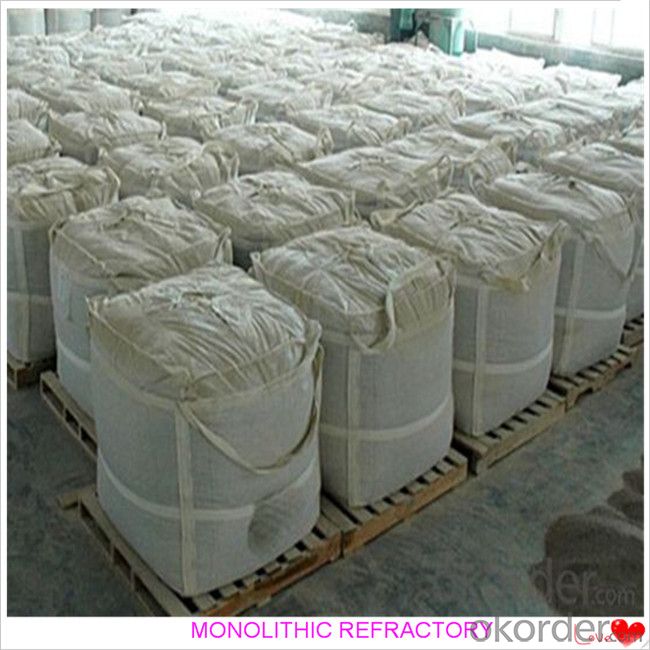
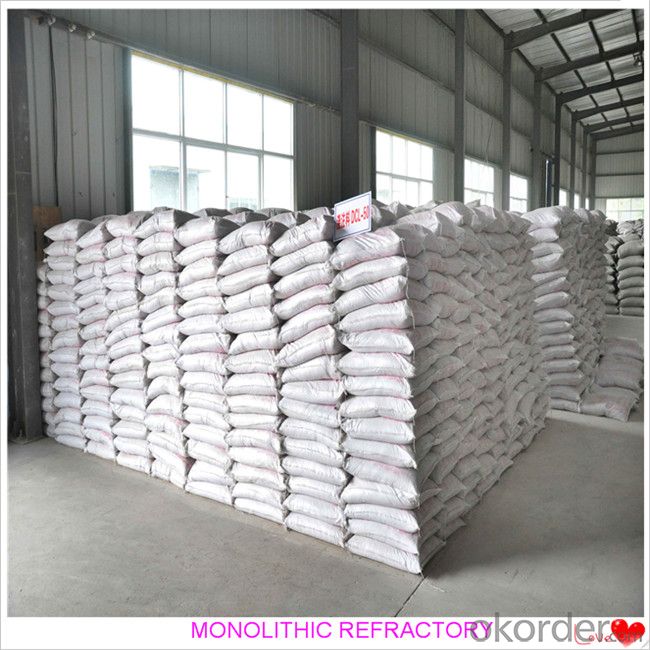
- Q: How are monolithic refractories applied in the hot face and cold face of furnace linings?
- Monolithic refractories are commonly used in furnace linings because of their superior thermal and mechanical properties. These materials are applied in both the hot face and cold face of furnace linings, but the application process differs for each. In the hot face of furnace linings, monolithic refractories are applied to withstand the extreme temperatures and harsh conditions. This is the area that directly faces the heat source and is exposed to the highest temperatures. Here, the refractory material is specifically designed to have excellent thermal conductivity and high resistance to thermal shock. To apply monolithic refractories in the hot face, a technique called gunning is commonly used. Gunning involves spraying or troweling the refractory material onto the surface of the lining. This technique allows for quick and efficient application, ensuring a uniform and dense layer of refractory material. Gunning is particularly suitable for areas with complex shapes and contours. On the other hand, in the cold face of furnace linings, the primary concern is insulation and protection. The cold face is the area that is not in direct contact with the heat source and experiences lower temperatures. Here, the refractory material is designed to have low thermal conductivity and high insulation properties. The application of monolithic refractories in the cold face is typically done using a technique called ramming. Ramming involves compacting the refractory material into place using a pneumatic or hydraulic ramming tool. This technique ensures a dense and solid layer of refractory material, providing excellent insulation and protection against heat loss. Overall, monolithic refractories play a crucial role in furnace linings, as they provide the necessary thermal insulation and mechanical strength required in high-temperature environments. The application techniques of gunning and ramming allow for efficient and effective installation in both the hot face and cold face of furnace linings.
- Q: How do monolithic refractories contribute to the overall efficiency of ladle transfer processes?
- Monolithic refractories contribute to the overall efficiency of ladle transfer processes by providing excellent thermal insulation and resistance to high temperatures, which helps in maintaining the heat of the molten metal during transfer. They also have high mechanical strength and erosion resistance, ensuring longer service life and reduced downtime for repairs. Additionally, monolithic refractories offer easy installation and can be shaped to fit the ladle's specific geometry, minimizing heat loss and ensuring a more efficient transfer process.
- Q: In iron and steel industry, the main raw materials for blast furnace ironmaking are iron ore, coke and limestone. What's the use of limestone here?
- Calcium oxide absorbs sulfur dioxide and prevents it from polluting the air.
- Q: How do monolithic refractories impact the overall productivity of iron and steel operations?
- Monolithic refractories have a significant impact on the overall productivity of iron and steel operations. These refractories are used to line the furnaces, ladles, and other high-temperature equipment, providing insulation and protection against extreme heat, chemical reactions, and mechanical wear. By ensuring the integrity and durability of these critical components, monolithic refractories enhance the efficiency and longevity of iron and steel production processes. They minimize downtime caused by frequent repairs or replacements, improve thermal management, and optimize energy consumption. Ultimately, the use of monolithic refractories leads to increased productivity, reduced costs, and improved quality control in iron and steel operations.
- Q: How are monolithic refractories different from traditional refractories?
- Monolithic refractories differ from traditional refractories in terms of their composition, installation method, and performance characteristics. To begin with, monolithic refractories consist of only one material, as their name suggests, while traditional refractories are typically comprised of multiple materials. This singular composition of monolithic refractories allows for greater control over their properties and performance. Moreover, the installation process for monolithic refractories differs from that of traditional refractories. Traditional refractories are typically installed in the form of bricks or precast shapes, which are assembled together to create the desired lining. In contrast, monolithic refractories are provided in a ready-to-use form, such as a dry mix or suspension, which is then poured, sprayed, or gunned into place. This facilitates a faster and more efficient installation of monolithic refractories. Lastly, monolithic refractories offer superior performance characteristics compared to traditional refractories. They possess improved thermal shock resistance, higher hot strength, and enhanced resistance to chemical attacks. Furthermore, they can be more easily repaired or patched compared to traditional refractories, which often necessitate the replacement of entire bricks or shapes. In conclusion, the key distinctions between monolithic refractories and traditional refractories lie in their composition, installation method, and performance characteristics. Monolithic refractories provide better control over properties, simpler installation, and superior performance, making them the preferred choice in numerous industrial applications.
- Q: What are the recommended drying procedures for monolithic refractories?
- Drying methods for monolithic refractories differ based on the specific type and composition of the material. Nevertheless, there exist general guidelines that can be adhered to. Initially, it is crucial to eliminate any excess moisture from the refractory material prior to drying. This can be achieved by storing the refractory in a dry environment or utilizing a dehumidifier if necessary. Once the refractory material has been adequately dried, the drying process can commence. It is advisable to initiate the process with a low drying temperature in order to prevent cracking or spalling. Gradually raising the temperature over time will allow for the gradual release of moisture. This can be accomplished by employing a controlled drying oven or furnace. The duration of the drying process will differ depending on the thickness and composition of the refractory. It is imperative to adhere to the manufacturer's guidelines for the specific refractory material being utilized, as they will provide the recommended drying duration and temperature range. Throughout the drying process, it is important to closely monitor the refractory for any indications of cracking or spalling. Should any cracks or damage occur, the drying process should be immediately halted to prevent further harm. It may be necessary to repair or replace the damaged areas before proceeding with the drying process. Once the refractory material has been fully dried, it is crucial to gradually cool it down to avoid thermal shock. This can be achieved by gradually reducing the temperature over time or allowing the refractory to naturally cool in a controlled environment. In conclusion, the recommended drying procedures for monolithic refractories involve gradually increasing the temperature over time, closely monitoring for any signs of damage, and slowly cooling down the refractory to prevent thermal shock. It is essential to adhere to the manufacturer's guidelines and recommendations for the specific refractory material being utilized to ensure proper drying and optimal performance.
- Q: How do monolithic refractories prevent thermal shock in the iron and steel industry?
- Monolithic refractories prevent thermal shock in the iron and steel industry by providing a continuous and seamless lining that can withstand extreme temperatures and sudden temperature changes. Their high thermal conductivity and low thermal expansion properties allow them to effectively distribute and absorb heat, reducing the likelihood of thermal stress and cracking. Additionally, their ability to form strong bonds with the furnace walls prevents the entry of hot gases and molten metal, further protecting against thermal shock.
- Q: What are the main factors affecting the abrasion resistance of monolithic refractories?
- There are three key aspects that categorize the main factors influencing the abrasion resistance of monolithic refractories: material composition, microstructure, and service conditions. Firstly, the abrasion resistance of monolithic refractories is significantly determined by their material composition. The selection of raw materials, such as aggregates and binders, directly impacts the overall hardness, strength, and wear resistance of the refractories. For example, high-alumina refractories, which have a high proportion of alumina as their main component, demonstrate exceptional abrasion resistance due to the hardness and toughness of alumina. Conversely, refractories with a higher percentage of softer materials like clay or magnesia may exhibit lower abrasion resistance. Secondly, the microstructure of monolithic refractories plays a crucial role in their ability to endure abrasion. The arrangement and orientation of the aggregates, as well as the bond strength between the particles and the matrix, significantly contribute to their resistance against wear. An evenly distributed and interconnected network of aggregates can strengthen the refractories and enhance their resistance to abrasion. Additionally, a compact and well-sintered matrix can prevent abrasive particles from penetrating, thereby reducing wear. Lastly, the service conditions under which monolithic refractories operate are vital factors in determining their abrasion resistance. Variables such as temperature, atmosphere, and mechanical stress can greatly impact the wear behavior of refractories. High temperatures can cause thermal expansion and contraction, resulting in cracks and spalling, which accelerate abrasion. The presence of corrosive gases or chemicals can also deteriorate the microstructure of refractories, diminishing their wear resistance. Moreover, mechanical stress from impact or friction can lead to localized wear and damage the refractories. To conclude, the abrasion resistance of monolithic refractories is influenced by material composition, microstructure, and service conditions. By carefully selecting suitable raw materials, optimizing the microstructure, and considering specific service conditions, it is possible to enhance the abrasion resistance of monolithic refractories and improve their overall performance in high-wear applications.
- Q: What are the specific requirements of monolithic refractories for ladle transfer applications?
- To ensure the effectiveness and durability of monolithic refractories used in ladle transfer applications, specific requirements must be met. These requirements are crucial for maintaining the integrity of the ladle lining and preventing any issues during the transfer process. Firstly, it is essential for monolithic refractories designed for ladle transfer applications to possess excellent thermal shock resistance. Ladles undergo extreme temperature changes during the transfer process, and the refractories must be capable of withstanding rapid heating and cooling without developing cracks or spalling. This property serves to prevent any damage to the lining and preserves the structural integrity of the ladle. Secondly, ladle transfer applications necessitate monolithic refractories that exhibit high resistance to chemical attack. Ladles often come into contact with various molten metals and slag, which can possess corrosive properties. The refractories must be able to endure these corrosive environments and maintain their physical and chemical properties over time. Another crucial requirement is good mechanical strength. Ladles can experience significant mechanical stress during the transfer process, including impacts and vibrations. Therefore, the monolithic refractories must possess sufficient strength to resist these mechanical forces and prevent any cracking or failure within the lining. Furthermore, ladle transfer applications frequently involve the use of fluxes and additives, which can possess different physical properties. The refractories used must be compatible with these fluxes and additives to ensure proper performance and avoid any adverse reactions that could impact the lining of the ladle. Lastly, monolithic refractories designed for ladle transfer applications should exhibit low porosity. Low porosity helps to minimize the penetration of molten metal and slag into the refractory lining, thereby reducing the risk of erosion and extending the service life of the refractories. In summary, the specific requirements for monolithic refractories in ladle transfer applications include excellent thermal shock resistance, high resistance to chemical attack, good mechanical strength, compatibility with fluxes and additives, and low porosity. By meeting these requirements, the refractories can effectively endure the harsh conditions of ladle transfer and ensure the longevity and performance of the ladle lining.
- Q: What are the specific requirements of monolithic refractories for soaking pit applications?
- The specific requirements of monolithic refractories for soaking pit applications are primarily aimed at withstanding high temperatures and thermal cycling, as well as providing excellent resistance to chemical attacks and mechanical stresses. Firstly, monolithic refractories used in soaking pits need to have a high temperature resistance capability, as these pits are subjected to extreme heat conditions. They should be able to withstand continuous exposure to temperatures exceeding 1500 degrees Celsius without any significant degradation. This is crucial to ensure the longevity and durability of the refractories. Secondly, thermal cycling is a common occurrence in soaking pit applications. The refractories should possess good thermal shock resistance to handle rapid changes in temperature. This prevents cracking and spalling, which can compromise the integrity of the refractories. Chemical attacks are also a concern in soaking pit applications due to the presence of molten metal, slag, and other corrosive substances. The refractories used should have excellent chemical resistance to prevent erosion and chemical reactions. They should be able to resist the corrosive effect of molten metal and slag, as well as any potential chemical reactions with these substances. Furthermore, soaking pits involve mechanical stresses, such as abrasion and impact, due to the handling and movement of metal ingots. The monolithic refractories must have good mechanical strength and abrasion resistance to withstand these stresses. They should be able to resist wear and tear caused by the movement of heavy loads and prevent any mechanical failure. Lastly, the refractories used in soaking pits should have good workability and ease of installation. This allows for efficient and effective lining of the pit, ensuring a proper seal and minimizing any gaps or cracks that could lead to heat loss or chemical penetration. Overall, the specific requirements of monolithic refractories for soaking pit applications revolve around high temperature resistance, thermal shock resistance, chemical resistance, mechanical strength, and ease of installation. Meeting these requirements ensures the refractories can withstand the harsh conditions of soaking pits and maintain their performance and integrity over an extended period.
Send your message to us
Monolithic Refractories for Iron and Steel Industry:Cheap Castable Solutions for Fireplace and Industrial Furnace
- Loading Port:
- China main port
- Payment Terms:
- TT OR LC
- Min Order Qty:
- 1000 kg
- Supply Capability:
- 3000000 kg/month
OKorder Service Pledge
OKorder Financial Service
Similar products
Hot products
Hot Searches
Related keywords
